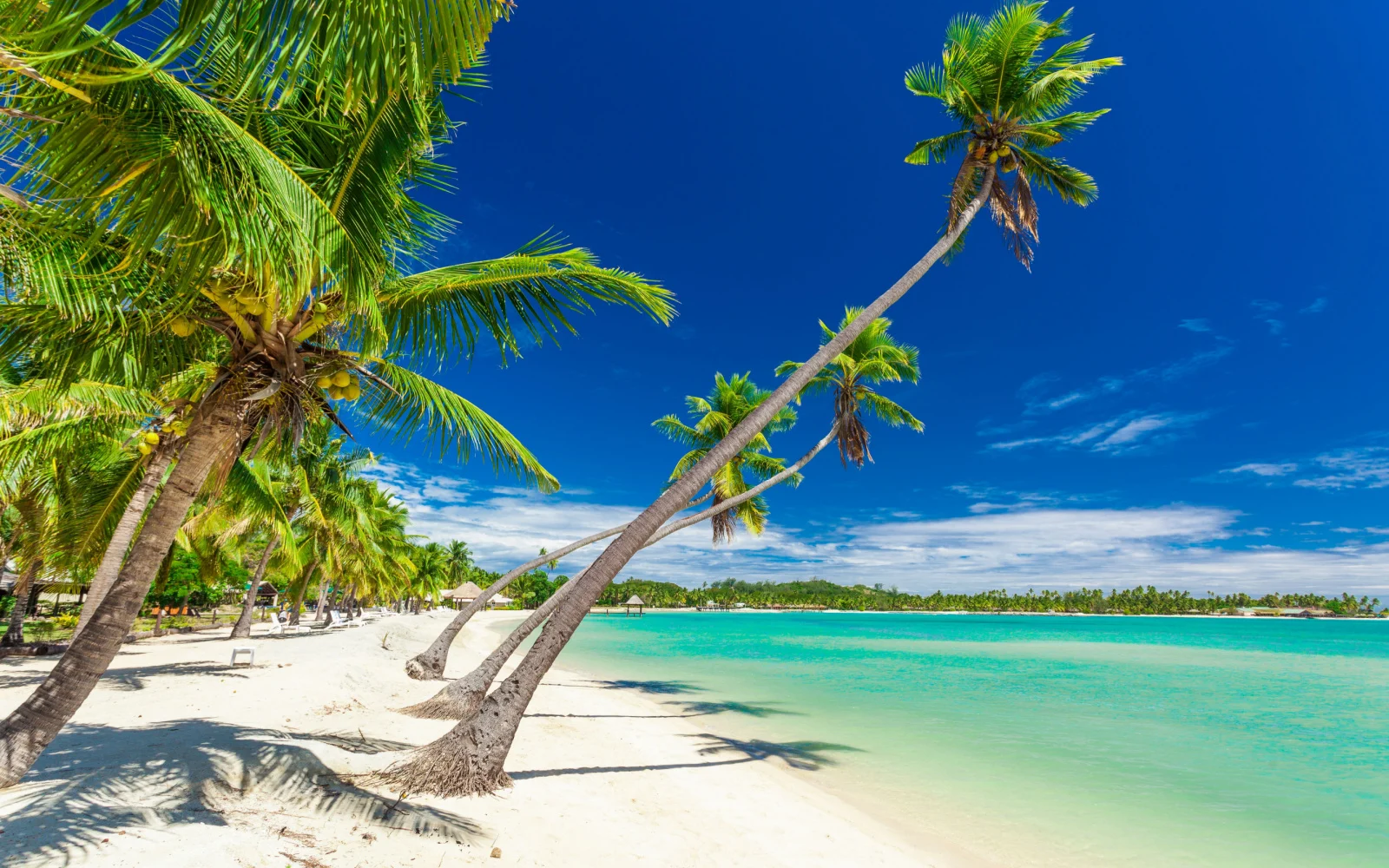What's the best time to visit Fiji?
The best time to visit Fiji is in the dry season from June to September, with sunny weather perfect for beach and water activities. Although it’s the peak tourist season with higher prices, Fiji’s size ensures no overcrowding, allowing visitors to fully enjoy the island’s natural beauty and vibrant events like the World Surf League.
Getting away to Fiji in the South Pacific is not the easiest trip in the world, but it’s certainly worth it once you get to see the beautiful landscapes. This tropical paradise is a destination to remember.
The best thing to do in Fiji is to lounge on the beach, and with over 110 inhabited islands and countless more beaches and uninhabited atolls, you’ll have plenty to choose from. Enjoy the resorts and beautiful sunsets of Savusavu or go diving from the beaches near the Great Astrolabe Reef.
Besides water sports, there is plenty to do on dry land in Fiji as well, from hiking the lush tropical landscapes, exploring the museums of Suva, to shopping for souvenirs and attending a local festival.
Since Fiji is definitely an investment to visit if you’re coming from most parts of the world, you don’t want to book your trip only to show up and realize you came during the wrong time of the year. Here is a quick guide to the best times to visit.
The Overall Best Time to Visit Fiji
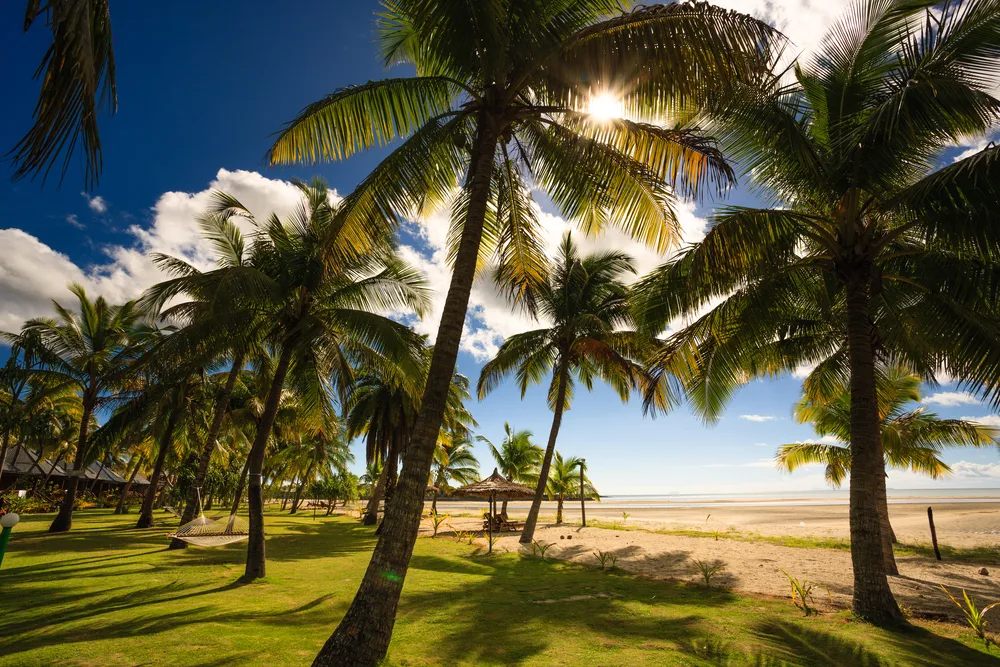
Radek Borovka/Shutterstock
The best time to visit Fiji is during the dry season, from June to September, which is also the tourist high season. It has the best weather and the best tourist offerings.
Visitors coming from places with temperate climates and the standard four seasons will have to adjust to a different climate and seasonal pattern in Fiji, which is a tropical island country. Like in most tropical places, Fiji has two seasons instead of the standard four — a wet and a dry season.
Temperatures in Fiji don’t fluctuate as much throughout the season, staying warm all year round. Even during the coolest month, August, temperatures tend to be in the high 70s or low 80s according to the Fahrenheit scale, and reach the high 80s during the hottest months of January and February.
The real seasonal difference is precipitation. During the dry season, from May to October, most days are sunny without a cloud in the sky. During the rainy season, from November to April, rain falls almost every day. Rainfall peaks in the month of March, which has an average of 23 rainy days a month in the capital Suva!
Since most activities in Fiji involve spending a lot of time outdoors, you want to come when the weather’s going to be sunnier. Otherwise, it’s not much of a beach vacation if you’re constantly getting rained out.
The dry season is also better for water sports such as scuba diving and snorkeling. Water visibility is better when weather conditions are dry because precipitation and runoff, which can contain mud and debris, affect underwater visibility.
Diving is also better in the dry season because you have a higher chance of seeing big fish such as sharks, as their migration patterns bring them to the South Pacific at this time.
This time is the high season in Fiji, so expect more tourists and higher prices. However, the island country is big enough and doesn’t get so many tourists that it feels overwhelming.
Instead, you just know for sure that all tourism-related businesses will be open during this time. Local cultural shows, such as meke dance performances or kava tastings, are more frequent during the high season. During the dry season, Fiji also hosts several festivals and international sporting events such as:
- World Surf League Championship Tour (August)
- Fiji Regatta Week (September)
Least Cheapest Time to Visit Fiji
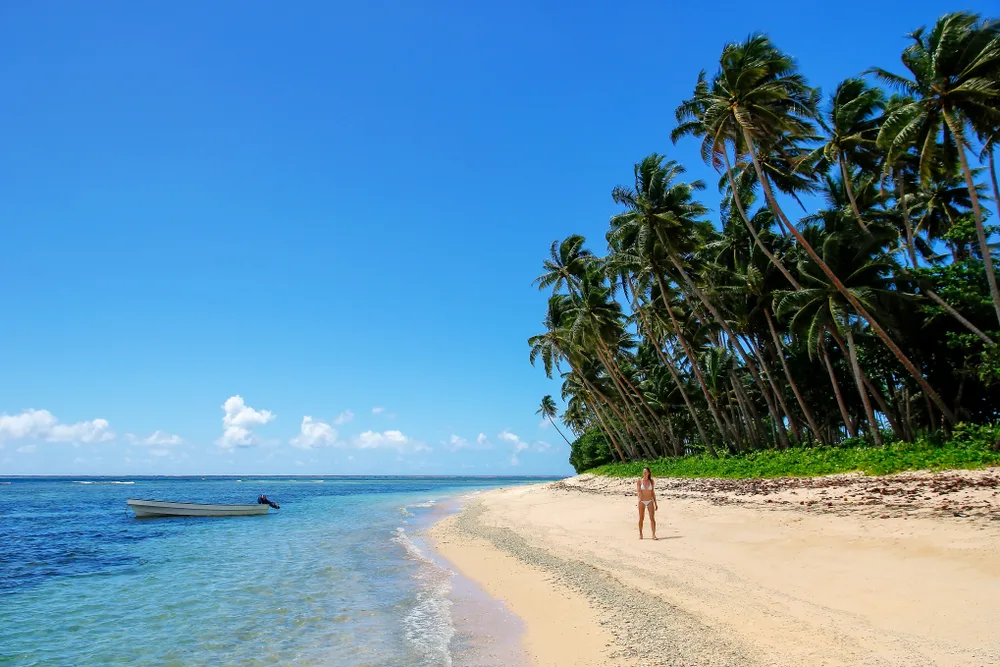
Don Mammoser/Shutterstock
The cheapest time to visit Fiji is during the off-season, which is between November and April, when the rainy season chases away many potential visitors.
Visiting Fiji is fairly expensive no matter when you choose to travel to the island country. Hotels and resorts tend to be quite pricey and getting to the country from most places in the world requires expensive airfare and a few flight transfers.
You can save some money by visiting during the off-season. Even upscale resorts slash their prices by 20-40% for the night, allowing you to have the vacation of your dreams while still saving serious money.
During the rainy season, you can also save money on flights. The price of getting to Fiji tends to drop when there is little demand, especially towards the middle of the season such as February and early March.
No matter when you decide to go to Fiji, check the calendar for Australian schools. Fiji is a popular destination for families from Australia and New Zealand, and prices will go up during their vacation times.
Least Busy Time to Visit Fiji
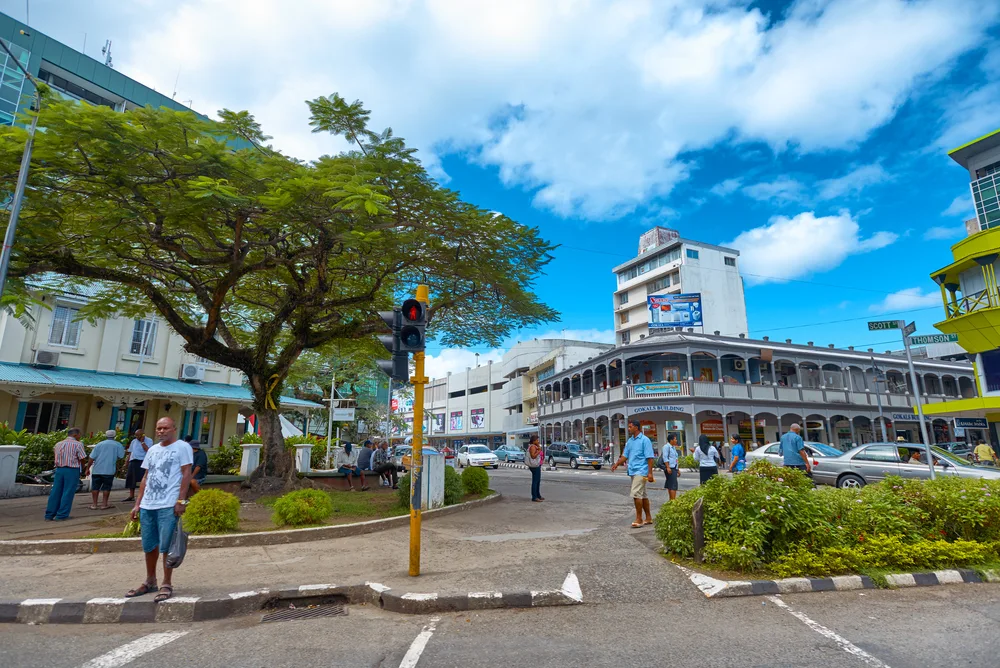
SUVA,FIJI-MAY 30,2012: The one of the central streets of the capital of Fiji/Truba7113/Shutterstock
The least busy time to visit Fiji is during the wet season, but if you want to beat the crowds and still lounge on the beach, then visit during the May and October shoulder seasons.
Visiting Fiji doesn’t have to mean choosing between good weather or few crowds. Fiji is not nearly as crowded as many of the world’s other top tourist destinations, even during the high season.
Before or after Australian school holidays, in May and October, you can enjoy fewer crowds before the weather becomes rainy. The fewer crowds mean that you can have the beaches and water more to yourself.
You can get up close to animals such as sharks and rays during excursions, instead of fighting with other tourists for a picture. Locals that work in the tourism industry are more relaxed and more able to interact with people authentically.
October in particular is a great month to visit if you want to get a feeling for local culture and enjoy festivals such as:
- Fiji Day (October 10th)
- Uprising Music Festival (October)
- Diwali (late October-early November)
Worst Time to Visit Fiji
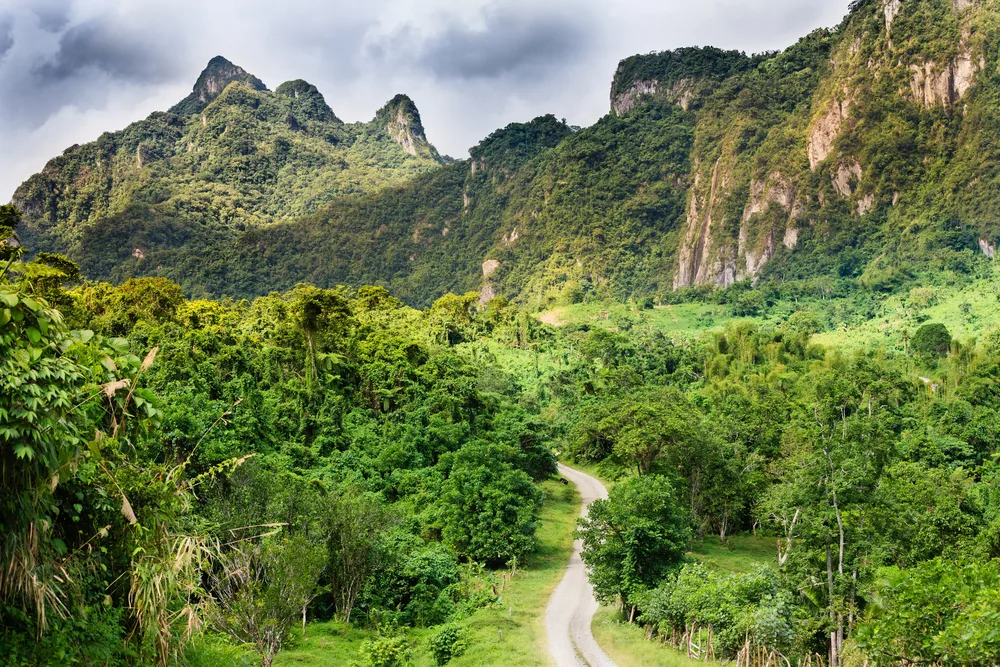
Radek Borovka/Shutterstock
The worst time to visit Fiji is during the rainy season, between November and April, when heavy rains make it impossible to enjoy many outdoor activities.
During the rainy season, it tends to rain every day, with heavy daily downpours the norm throughout much of the country. The north and west tend to be hit particularly hard.
The rains make all kinds of outdoor activities difficult. Hiking or lounging on the beach is hard if you are being pelted with raindrops.
Kayaking or other river-based activities are usually not organized during the rainy season because the rain swells waterways to dangerous heights. Diving and snorkeling are possible, but less enjoyable as the visibility is much worse.
Getting around the country also gets harder during the rainy season. Heavy rains and storms cause many ferries and flights to either operate at a reduced schedule or get canceled altogether.
The high humidity also makes it harder to get around. The rainy season can also be downright dangerous in Fiji. According to the Fiji Meteorological Service, cyclones are likely between November and April.
These heavy storms can cause flooding and even deaths. That being said, it is possible to visit Fiji during the rainy season, and some people even prefer it due to the lower prices and fewer crowds.
It is possible to avoid the rain, especially the further south you go, where the climate tends to be a bit more moderate. Even in the rainiest parts of the country, there only tends to be one major shower in the late afternoon, so schedule your outdoor activities for the early morning.
Things to Consider
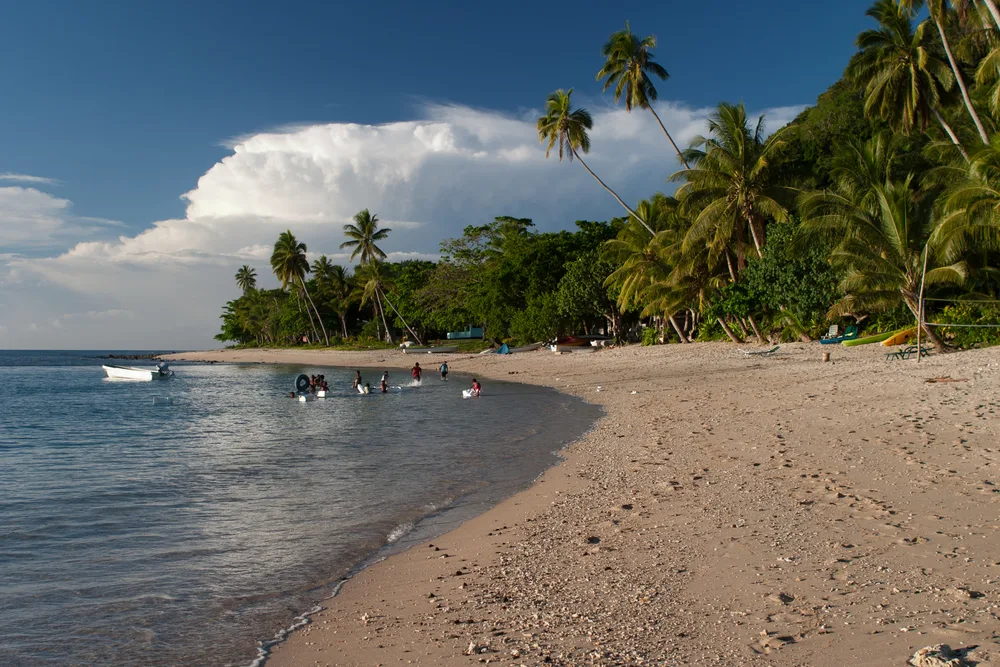
Ethan Daniels/Shutterstock
Here are a few additional tips for picking the best time to visit Fiji:
- Book well in advance for the high season. Popular resorts tend to fill up quickly or raise their prices.
- If traveling during the rainy season, get travel insurance. You may have to cancel your trip or change plans if there is a cyclone warning.
- Check the calendar for school vacations in nearby Australia and New Zealand. Fiji is a popular destination for families from those countries and tends to get busy during their vacation times.
Frequently Asked Questions
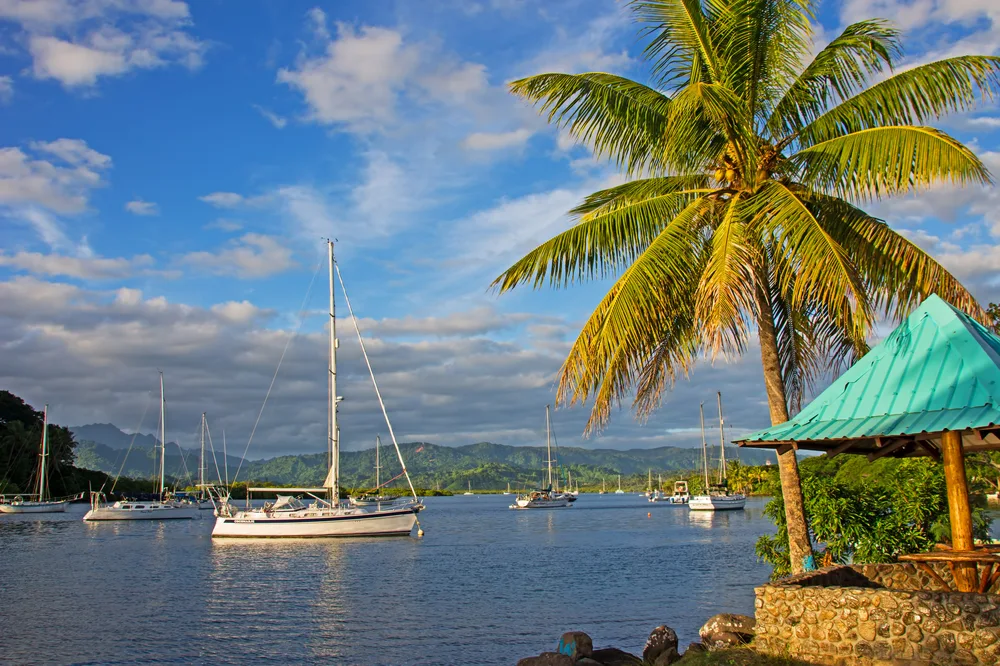
Renee Vititoe/Shutterstock
Here are some of the most common questions people ask about timing their visit to Fiji:
What is the best month to go to Fiji?
The best month to go to Fiji is October, when the weather is beautiful, there are few crowds, and there are plenty of local festivals happening.
What are the least expensive months to go to Fiji?
The least expensive months to go to Fiji are January and February, when the rainy season keeps many visitors away and there are no major holidays to increase prices.
What is the hottest month in Fiji?
The hottest months in Fiji are January and February, when the weather gets very hot and humid, with little cooling down even at night.
When is Fiji’s rainy season?
Fiji’s rainy season lasts from November to April, when you can expect daily heavy rains. Fewer people visit during this time.
So, What’s the Best Time to Visit Fiji?
The best time to visit Fiji is during the dry season, which lasts from May to October. At the very beginning and end of the season, you can even beat the crowds.



